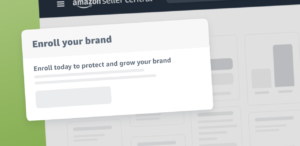
Unlocking Amazon Success: Mastering Total ACOS Optimization
Introduction: In the dynamic realm of Amazon advertising, success hinges on mastering key metrics, and
I’m convinced that SEO is the best way to grow a business. Whether it’s an eCommerce store, in-person service business, or a recipe blog. Website SEO is key to success. If you can get traffic coming to you from Google and other search engines, you’ll have a steady stream of new potential customers without spending money on ads.
You can also build a website that makes money from affiliate sales or ad revenue. Right now, money-making websites are selling for 35x the average monthly profits. If you build a website that earns $1,000/month, you now have an asset worth $35,000.
It’s like creating money out of thin air.
The toughest thing about SEO is that it tends to take a while.
It takes time to create content.
Google take some time to trust your website.
It takes time for you to see results.
You can turn on ads and get eyeballs on your stuff within a few hours. I’ve seen some quick results from SEO, and I’ve seen a few other SEOs do it, but that’s not the norm. Usually, you’ll be working on a new website for a few months before seeing the results you want.
That also doesn’t mean you can sit back and wait for 6 months until your SEO starts working. You need to take action. The longer you wait, the longer the results will take.
I can’t guarantee that you’ll see 1,000 visitors in the first 3 months. But I’ve learned what works and what doesn’t. Here are some quick tips to help you get a new site off the ground faster.
In the beginning, any people showing up on your website is a good thing. Even if they got there by clicking a link that you sent them via text.
The main reason you want other people to visit your website is to improve the user experience. They might notice things that you missed.
You’ll want to find and fix all of these things as quickly as possible. Having a second, third, and fourth pair of eyes on your site always helps.
It’s also helpful to get people to visit your website on different devices. You probably used your computer or laptop to design the site, but everyone’s device screen size is different. Things might look different than you expected.
Google is paying attention to everything, including how long people stay on your website. If 95% of people are leaving after 10 seconds because of a mistake or technical issue, they won’t be sending more people your way.
With a new website, you want to show Google that they can trust you.
Anyone can build a website in an hour. Search engines need to see trust signals that reduce the probability that you’re trying to scam people with your new site.
What does a new business do?
They create social media profiles.
You don’t need to actively post on these accounts, but creating them can help build some trust. Use the same profile picture, same email, and same name across the board.
You can also link to your website on your profiles. This doesn’t have the same effect as a backlink, but it’s helpful.
Have you ever been on a website where you click on a different page and you’re not sure if it’s the same site?
Not good.
SEO comes down to two things:
Brand consistency helps you create a more enjoyable experience for your visitors. They end up staying on your website longer, they trust it more, and they’re more likely to share it with someone else.
You don’t need to be a branding expert to create consistency.
When I start a new website project, I choose 4 brand colors and two fonts. That’s it — KISS (keep it simple, stupid).
Once you pick those it makes things so much easier, and it always looks more professional than a site with 8 different fonts and 47 different shades of blue on every page.
I love Canva and use their palette generator to pick brand colors. I’m not a professional designer, so I pick two fonts on the more generic side. One font for headings and one for body text.
This way, when people go from your homepage to your article, they know that they’re on the same website.
Not every article on your website needs to be 5,000+ words, but you do need a pillar piece of content.
This is where you’ll provide as much info as possible about a specific topic in your niche. It needs to go beyond the surface-level info that’s obvious to most people. I’d say that a pillar piece of content needs to be at least 3,000 words.
From this article, you can link to shorter articles, and from shorter articles to your pillar content.
For example, you could have a pillar article “Everything You Need to Know About Writing on Medium” and then some shorter articles like:
“How to Find Better Photos for Medium Articles”
“Write Better Headlines on Medium”
“How to Get Your First 100 Followers on Medium”
The pillar article will cover things like finding photos and writing headlines, but it’s broader information than the shorter articles.
Your website should be about one specific topic — especially when you’re just getting started. Breaking that topic down into smaller topics will help you keep your content organized.
I learned about creating topic buckets when I was more focused on social media. This helps me create a content plan and stay focused on the right topics.
Instead of trying to think of what to post next, you can look at your 3 content buckets and have a better idea of what type of content you should be creating. These also help when you’re gathering ideas or researching new topics.
To create these, you’ll need to do some research. Start with competitor research. What are the websites in your niche talking about? Which of those topics interests you the most?
Then you’ll want to think about what your target audience wants to see.
After that, I’d focus on keyword research. Find low-competition keywords and organize them into your 3 content buckets.
Let’s say you have a wedding website. Here are 3 content buckets that might make sense:
If you have an idea for new content, but it doesn’t fit into one of those buckets, I’d put it off for now. The more focused you can be on specific topics, the better.
This will help you build topical authority, and then you can branch out into broader topics.
Adding content to your new website is essential.
Writing 10,000 words might sound like a lot of work, but that’s the bare minimum if you want to get SEO results. I’d recommend doing even more than that. Websites that get results faster publish a ton of content.
One SEO started a new site and published 80,000+ words in the first week. You’ll need a budget and hire writers to do that. They got results, but it required bigger upfront investment.
Most new websites simply don’t have enough content on them.
Google looks at a site with 5,000 words and says, “there’s not enough stuff there, I’m not gonna recommend it.”
It’s like sending people to a grocery store with empty shelves.
More content means that search engines will better understand what your website is about, you’ll build more trust with search engines, and you’ll increase the chances of ranking for more keywords.
Realistically, you’re looking at 4–6 months of consistent work to start getting SEO traction. The first month you’ll be super excited and work hard. In the second month, you’ll probably still be motivated.
But eventually, the motivation will dissipate.
Most people don’t see any results with SEO because they give up too soon. Part of overcoming this is accepting the fact that SEO requires a bigger upfront investment.
Establishing a publishing schedule will help keep you on track.
Randomly posting whenever you feel like it or have extra time is not a good plan, and you’re more likely to give up. Set a goal that stretches you without being out of reach.
Can you post once a week? Twice a week? Every other day?
Whatever your schedule is, do whatever you can to stick with it. For my blog sites and Medium, I set a monthly goal. For example, I want to publish 20 posts on one of my blog sites every month.
That means I need to post 5 times a week. Some weeks will be busier than others, so I plan out each week on Monday. Some weeks I know that I’ll only have time to write 3 posts, knowing that I’ll need to catch up on a different week to stay on track.
Visit our services page or contact us to get any service. You can find more information like this here.

Introduction: In the dynamic realm of Amazon advertising, success hinges on mastering key metrics, and

Building and managing a unique brand management can be tricky. Amazon Brand Registry is here

Introduction: Welcome to the dynamic world of e-commerce! If you’ve set up your Amazon store

Learn about crafting high-performance product listings in the Amazon store with this guide. What can